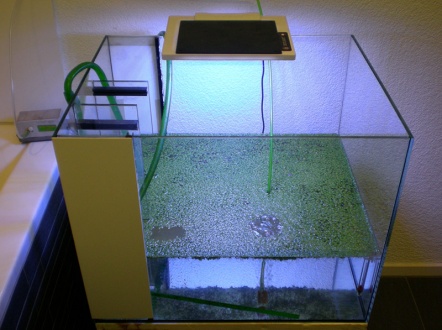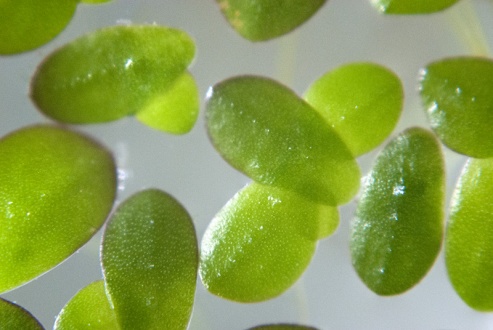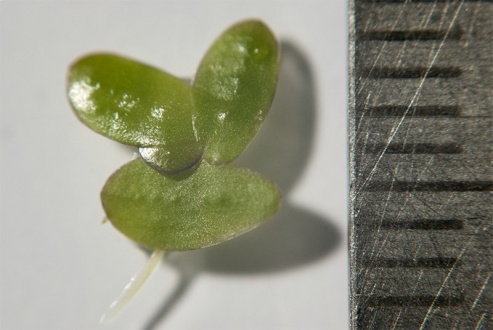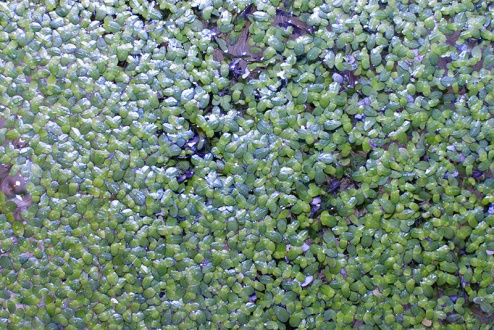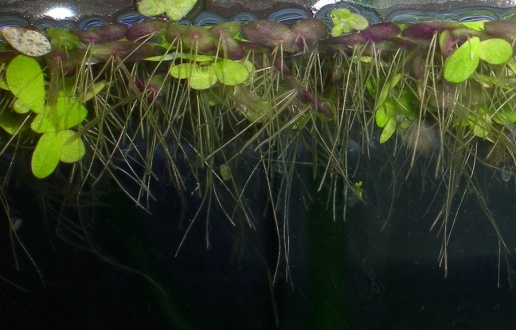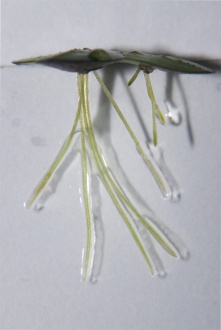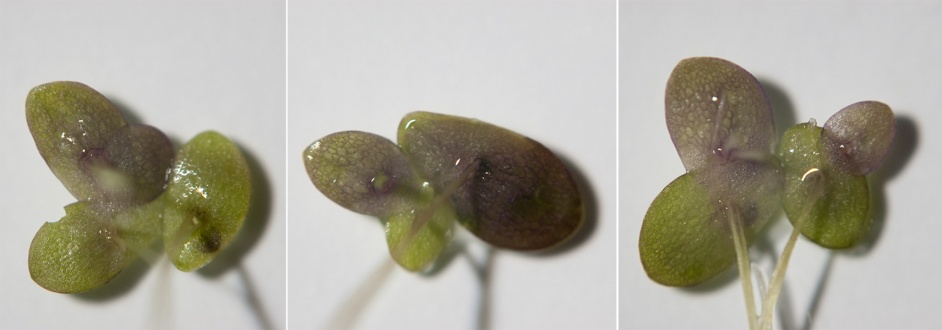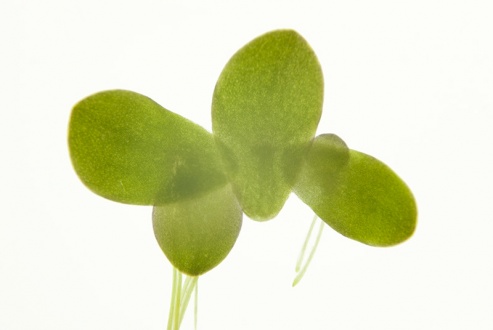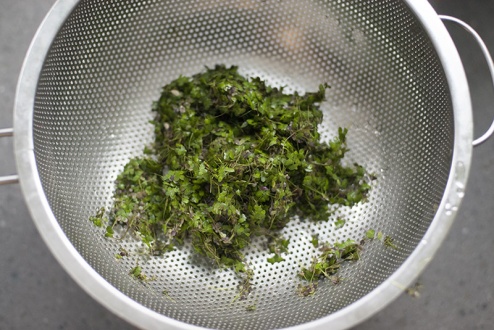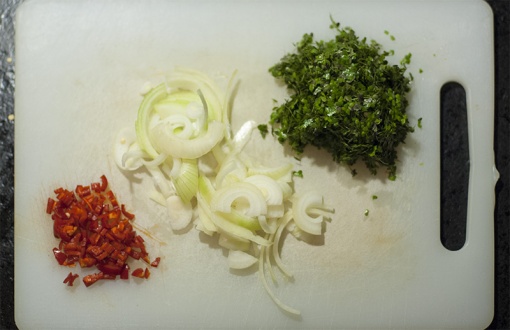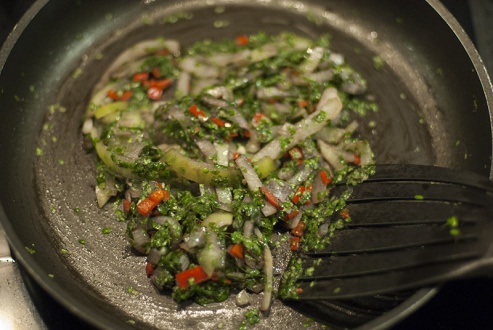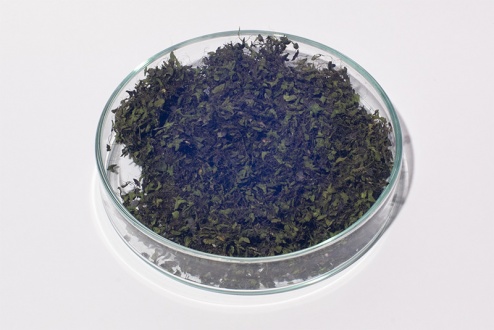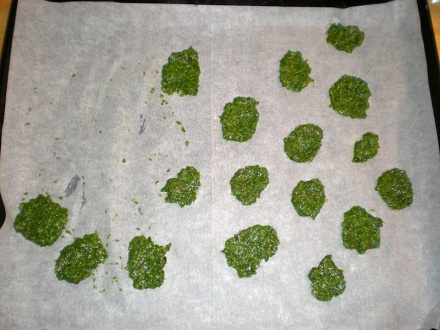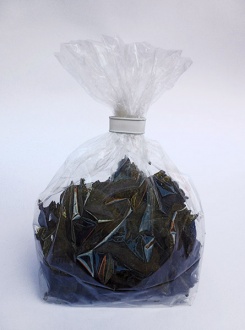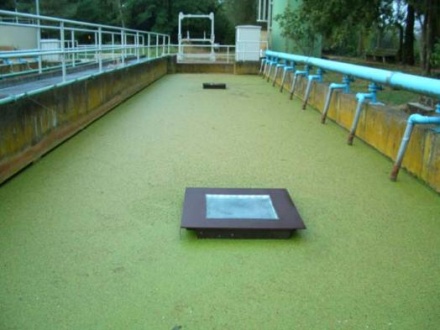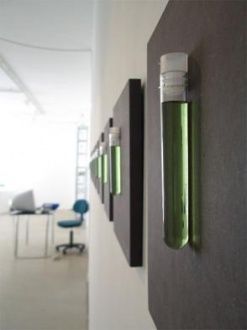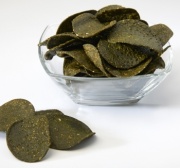Difference between revisions of "Fostering Duckweed"
(→Recipes) |
(→Recipes) |
||
| Line 157: | Line 157: | ||
== Recipes == | == Recipes == | ||
| − | * [http://www.st-hildegard.com/de/hildegard-medizin/heilmittel/6-wasserlinsen-elixier.html Wasserlinsenelixier nach Hildegard von Bingen] | + | * [http://www.st-hildegard.com/de/hildegard-medizin/heilmittel/6-wasserlinsen-elixier.html Wasserlinsenelixier nach Hildegard von Bingen] [http://hildegardvonbingen.info/mit-dem-wasserlinsen-elixier-gesund-durch-den-winter/ -->] |
| − | [http://hildegardvonbingen.info/mit-dem-wasserlinsen-elixier-gesund-durch-den-winter/] | ||
Revision as of 12:10, 23 February 2016
Contents
The great promises
Duckweed might be the food of the future?
Grown under ideal conditions, duckweed ranges between 25% and 45% protein and doubles its growth every 36 hours. Duckweed produces biomass faster than any other flowering plant. This tiny aquatic plant has tremendous potential for cleaning up pollution, combating global warming and feeding the world. (this is a very optimistic view I have to say)
- Bioful: It has potential as an alternative for biofuel production. (Methanol und Ethanol)
- Bioremediation: Living Machines for cleaning wastewater.
- Biomining: of phosphorus and other minerals/nutrients from wastewater.
- Bio-sensors: Duckweeds are used for the detection of heavy metals and organic contaminants.
- Animal food: food for fish (tilapia), chickens, pigs and of course ducks! Duckweed integrates very nicely into aquaponics. It can provide all the protein needs for some breeds.
- Human food: Depending on strain and growing conditions, duckweeds can have very high protein content of up to 50% of dry mass.
- In Space: food production in bioregenerative life support systems in space.
Features of Duckweed
- Duckweed belong to the smallest flowering plants in the world and spread primarily by vegetative growth. Daughter fronds bud from reproductive pockets on the side of a mature frond. An individual frond may produce as many as 10 generations of progeny over a period of 10 days to several weeks before dying. As the frond ages its fiber and mineral content increases, and it reproduces at a slower rate.
- In fall, they decay and completely disappear from the surface. Beforehand the plant produces small buds, sinking to the bottom and overwintering.
--> source: Swiss Plant Life / Ewald Weber 2009
- Die Wasserlinse existiert unter Wasser und steigt zur explosionsartigen Vermehrung an die Wasseroberfläche auf. Sie stellt damit ein Wesen der mystischen „Anderswelt“ dar, des Reiches der Ahnen und Geister.
- Eine Wasserfläche von 10m2 deckt den Proteinbedarf eines Menschen, selbst wenn der Umweg über Nutzvieh gewählt wird.
- Inhaltsstoffe: Calcium, Carotinoide, Flavonoide, Fette, Magnesium, Oxalate, Phosphor, Proteine mit allen essentiellen Aminosäuren, Schleimstoffe, Spurenelemente, Vitamine und Xanthophyll.
--> source: Wilde Genüsse / Margot Fischer 2014
- Wasserlinsen gedeihen ausgezeichnet in überdüngten Gewässer. Auch durch Schwermetalle verschmutztes Wasser kann sie nicht beeinträchtigen. Sie vermögen Schwermetalle aufzunehmen und haben so wasserreinigende Wirkung.
- Compared with most plants, duckweed fronds have little fiber -- as little as 5 percent in cultured plants -- because they do not need structural tissue to support leaves or stems. As a result virtually all tissue is metabolically active and useful as a feed or food product.
- They are growing extremely rapidly.
- Duckweed protein has higher concentrations of the essential amino acids, lysine and methionine, than most plant proteins and more closely resembles animal protein in that respect. " Figure 3 compares the lysine and methionine concentrations of proteins from several sources with the FAO standard recommended for human nutrition. The protein content of duckweed is compared with several animal feed ingredients in Figure 5
- Cultured duckweed also has high concentrations of trace minerals and pigments, particularly beta carotene and xanthophyll, that make duckweed meal an especially valuable supplement for poultry and other animal feeds. The total content of carotenoids in duckweed meal is 10 times higher than that in terrestrial plants;
Classification
- Family: Araceae
- Subfamily: Lemnoideae
- Genus:
Lemna: Lemna minor, Lemna minuta, Lemna gibba, Lemna trisulca, Lemna turionifera, etc.
Landoltia: Landoltia Punctata
Spirodela
Wolffia
Wolffiella
- Trivial names: Duckweed, water lentils (E) - Entengrütze, Entenflott, Entengrün ( D)
--> Species Of Lemnaceae In Western North America
--> Naturhistorisches Museum Wien „BOTANIK IM BILD“ - Wasserlinsengewächse
Starting with experimentations
Heidy once get some duckweed in an aquarium store for her fish aquarium. They usually dont sell duckweed, it was for free. Since then, the duckweed overgrows the aquarium constantly. Instead of throwing a quarter of them away once a week, we could make something out of it.
What we are interested in
- Lemnas sind geniessbar und verfügen über einen eigenen, etwas teichigen Geschmack. Zudem, und dafür werden sie allerseits gepriesen, enthalten sie viele Proteine und alle essentiellen aminosäuren. --> Wilde Genüsse / Margot Fischer 2014
- Duckweed produces biomass very fast.
- Wasserlinsen gedeihen offensichtlich gut in überdüngten Gewässern. Sie sind zum Beispiel auch auf Klärbecken zu finden und scheinen Überdüngungen zu mögen.
- Duckweeds grow under a wide variety of conditions, they are generally not found in oligotrophic water (water in which nutrients are in low supply). Exceptions are waters heavily contaminated by waste water.
Nutrients from organic wastes
The same is also mentioned in the article „Duckweed Aquaculture“ Growth conditions: The natural habitat of duckweed is floating freely on the surface of fresh or brackish water sheltered from wind and wave action by surrounding vegetation. The most favorable circumstance is water with decaying organic material to provide duckweed with a steady supply of growth nutrients and trace elements. --> source
To cultivate duckweed a farmer needs to organize and maintain conditions that mimic the natural environmental niche of duckweed: a sheltered, pond-like culture plot and a constant supply of water and nutrients from organic or mineral fertilizers. Wastewater effluent rich in organic material is a particularly valuable asset for cultivating duckweed because it provides a steady supply of essential nutrients and water. --> source
Urine as nutrients
What we want to do is, to produce nutrients from urine and kitchen waste for the duckweed. The transformation of urine into nitrate is called nitrification and is caused by nitrifying bacterias (or nitrifyers). Urea is hydrolysed into ammonium (NH4+) by bacteria containing an enzyme called urease. Ammonium is transformed into nitrite (NO2-) by a first class of nitrifyers. Then the Nitrite is in a second step transformed into nitrate (NO3). --> source
Art / Design / Products using Duckweed
Market oriented production
A company in Florida grows Lemnoideae plant to produce proteins for several products. It‘s known under the name: LENTEINTM Plus POWDER
--> On its website, they praise the very good nutrition facts of their duckweed powder.
Further Links
There is a vast amount of scientific research and available information on the Internet about duckweed. Here a selection of useful links:
- Duckweed Aquaculture - A NEW AQUATIC FARMING SYSTEM FOR DEVELOPING COUNTRIES
- Synthetic Media for Growing Duckweeds
- The Charms of Duckweed
- Lemnaceae species:
- A More detailed list of the Lemnaceae species:
- Eat the weeds / Foraging with Green Deane, A useful article about duckweed
- Open Source Ecology
- LemnaPedia
- LemnaTec Literature
- ILA - International Lemna Association

